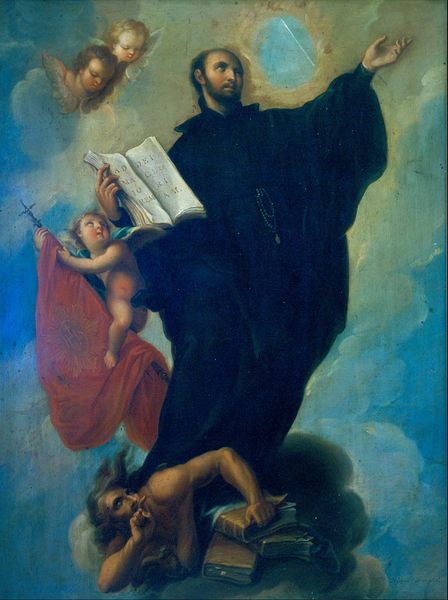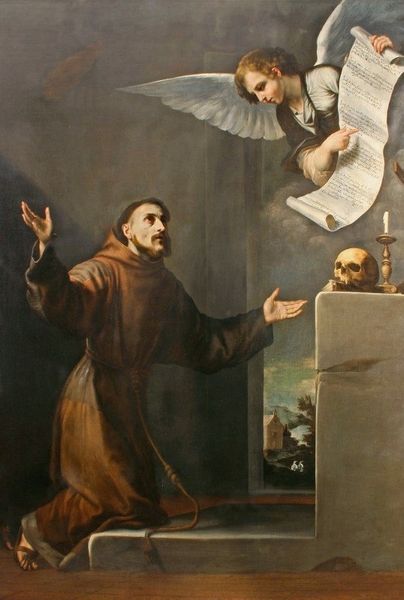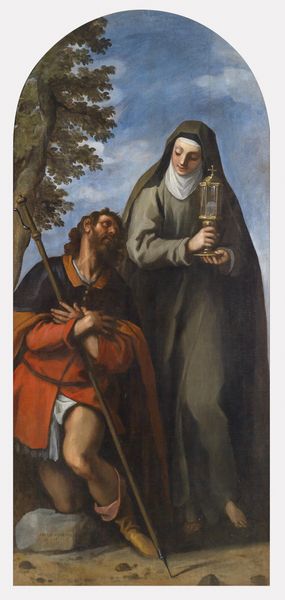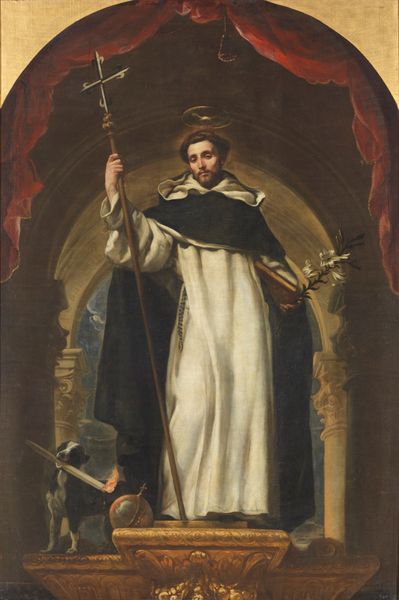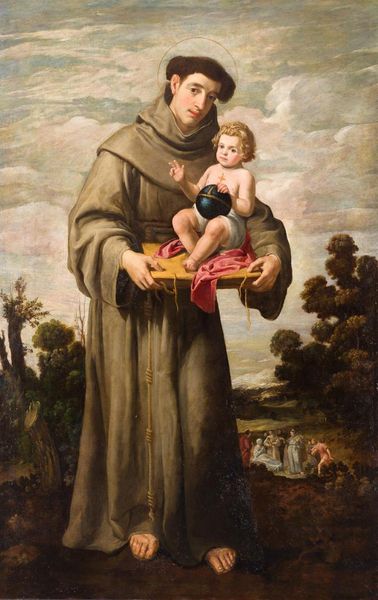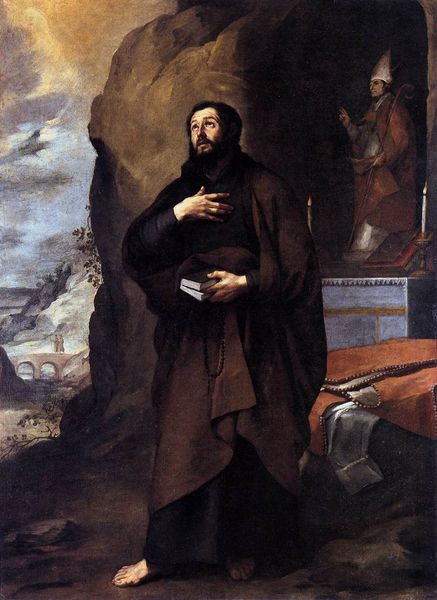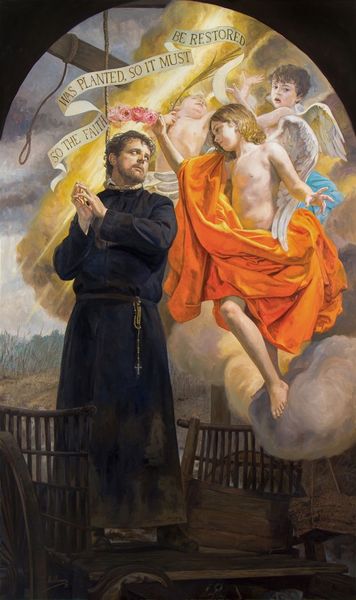
painting, oil-paint
#
portrait
#
baroque
#
painting
#
oil-paint
#
figuration
#
oil painting
#
history-painting
Copyright: Public domain
Curator: Miguel Cabrera's "Saint Francis Xavier" presents a fascinating study in Baroque portraiture and hagiography, currently housed at the Museo Nacional de Arte in Mexico City. Editor: Immediately, I notice the pronounced diagonal composition. The saint seems to be elevated above the partially nude figure beneath him, an interplay of triumph and…vulnerability, perhaps? Curator: That visual dynamic is central. Xavier, a pivotal figure in the Jesuit missions to Asia, is often depicted with symbols of his evangelizing work. This image is fascinating. Note the seashells, often interpreted as a baptismal symbol, offered up by hovering angels. Editor: And the anguished figure cowering under his feet. Its intriguing that we cannot determine any explicit markers that could connect that body to one specific geographical location in Asia; it becomes an Everyman standing in as a blank canvas onto which early colonial projects of faith were imposed. Curator: The painting certainly engages with the power dynamics inherent in colonialism and religious conversion, but Cabrera seems keen to portray spiritual authority and righteousness. It's essential to view it through an intersectional lens: Catholicism's role in shaping societal structures and racial ideologies within New Spain at this time is hard to ignore. Editor: Absolutely. Cabrera's strategic use of light and shadow also plays a crucial role. Observe how Saint Francis is illuminated, drawing attention to his benevolent expression and symbolic items, contrasting starkly with the more somber tones engulfing the figure below. Light and darkness creating this clear duality, of holy over damned, or in more simple terms, saved vs unsaved. Curator: Precisely, the use of tenebrism is common for this period in painting! The work is a study in colonial power but I would argue more so that Cabrera, like many painters in the vice royalty was creating imagery that cemented criollo authority as one legitimated through religious association, or direct links to European bloodlines and cultural values. Editor: I see now, this adds further depth to my reading and interpretation. So the symbols are acting as a language, the pictorial and iconographic language of faith. These signs solidify and legitimise power and belonging at the edges of empire. I came away considering this an iconographic display for identity during the Spanish colonial rule. Curator: Understanding that helps enrich my view of what Saint Francis Xavier meant for colonial visual art.
Comments
No comments
Be the first to comment and join the conversation on the ultimate creative platform.
